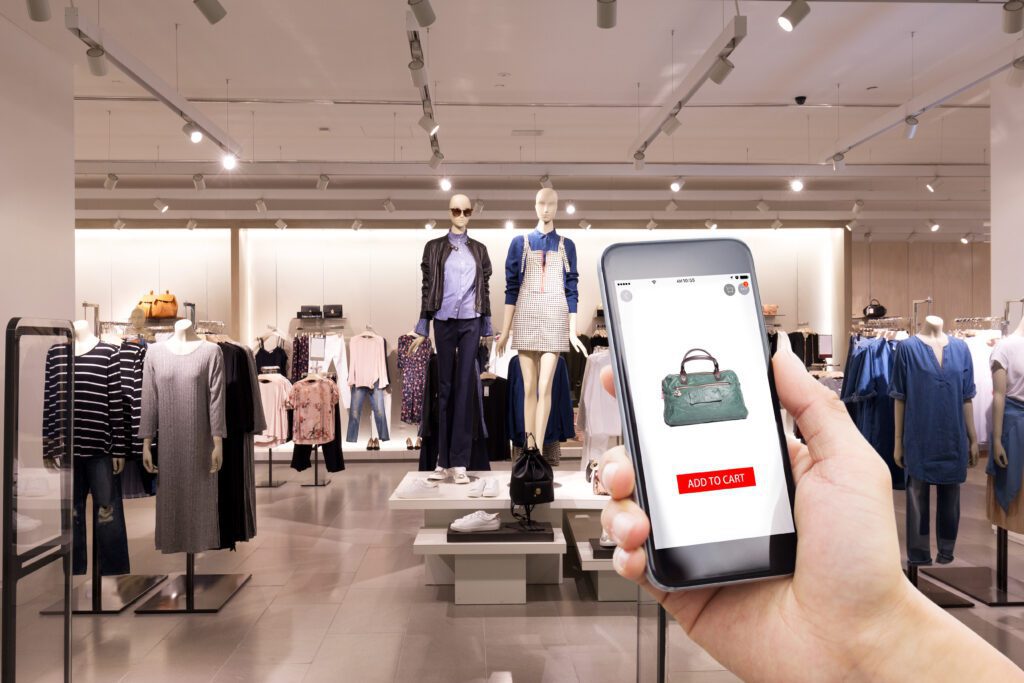Competition in the retail sector is exceptionally intense right now, with challenges coming from all angles. Customers are changing buying patterns. Covid-19 opened and closed retail doors more than the average hotel doorman. The recession is forcing Retailers to look to data and digitization to solve complex customer behavior changes.
Kroger, the CEO Rodney McMullen shared with CNBC’s “Squawk on the Street” that customers are adapting to inflation by increasing their coupon usage, preparing meals at home, and opting for more affordable private label brands as a means to save money. McMullen mentioned that customers’ behavior reflects a recessionary mindset.
“What customers are telling us, they’re already behaving like they’re in a recession,”
E-commerce is now the platform of choice for many who have never dared to shop online. Retail digital transformation is in full swing.The retail sector is swirling through disruption, but gains are there to be made. The stores with agile digital transformation models and a digital forward philosophy are vacuuming up market share. Competitors will slip into your shadow if Retail can adopt a streamlined yet personal customer experience.
However, getting a digital transformation right immediately following a pandemic hasn’t been easy for many. We’ve seen stores like Lord & Taylor, Brooks Brothers, Pier 1, Gold’s Gym, and more fall into bankruptcy. On the other hand, Chewy, Lululemon, Dick’s Sporting Goods, and more are cleaning up thanks to agile digital operations. What is making the difference, and how can retailers digitally transform successfully?
What Should Retailers Prioritize to Leverage the Benefits of Digital Transformation?

1. Lessen the Customer Service Burden
E-commerce systems aim to provide a hiccup-free, self-service buyer experience, and doing so involves as much automation as possible. Customers want to be able to go from browsing to checking out with the fewest customer service interactions possible.
Whether you install a knowledge management system to maintain the self-serve aspect or an easily accessible chat bot, your store’s reliance on customer service will be reduced through a digital transformation. This means fewer customer care demands and a drastically lower cost of sales.
2. Maintain Seamless Customer Experiences
Digital customers have gotten much more ruthless and increased their expectations. A frustrating buyer journey that forces customer service interactions causes more abandoned carts than you realize. Upwards of $4 trillion in online purchases carts will be abandoned this year, but removing frustrations can establish you as a trusted benchmark. If a customer has been browsing your products online, and they can’t easily find their coveted item in the store, you’ve interrupted their experience.
Smoothing out your CX, like Lululemon, for example, helps customers to see you as the benchmark experience. Lululemon doesn’t make you create an account. They don’t hide shipping costs. They definitely don’t make you wait for product delivery. Smooth sailing from start to finish establishes you as the best in class in just one experience and creates brand loyalty.
3. Taking Advantage of Upsell Opportunities
Mcdonald’s and upselling became synonymous with the advent of the “supersize” or “do you want fries with that?” mantras. The concept applied to e-commerce is helping retailers to grow their revenues significantly. Whereas cross or upselling in person usually comes across tone-deaf, it is seamless online and the opportunities are everywhere.
The ‘customers also bought…’ is perfected by the likes of Best Buy and Amazon. Customers are allowed to visualize the products and quite often choose to spend more than they intended with a retailer.
4. Understanding Buyer Preferences
Data analytics is key to the entire retail industry. The more information you retain, the more personal and attractive your customer experience can be.
Machine learning and AI allows retailers to understand what items customers buy together, what items are most viewed and a host of other extremely useful details. With the right information, conversion rates can be increased drastically.
5. Enhance Marketing Campaigns
Capturing and processing data is like the cheat codes to a video game. You begin to understand what unlocks different levels. Collecting the right buyer data informs your marketing campaigns on what the customer values the most.
By understanding your audience better, you can apply a variety of sales tactics such as discount codes, testimonials and money-back guarantees to items you already know your audience is interested in. Expect to see your conversion rate optimization climb into the elite ranks at 10% and above.
6. Reduce Wastage and Slow Moving Stock
A deep understanding of the products your customers check out also informs stock orders. Less wasting time and space with items that don’t move quickly. Smart data makes bulk ordering possible which invites all types of economies of scale. A savvy ERP system will quickly translate into better profitability or a discount for your customers. Both of which benefit your bottom line.
7. Operations Transparency
A successful digital transformation allows a retailer to collect and collate data from all stages of production. It shows trends, patterns, resource usage, wastage and bottlenecks from every department in a digestible and actionable form. It means that you can see exactly where profits are lost and processes have grown into legacy status.
Digital transformation is not only an innovation but it shows you where innovation is required right across the board. Installing self-reporting software and hardware provides a foundation for smarter decision making.
8. Upgraded Adaptability
Nothing has been more critical to business success over the past few years than the ability to react to change. Small and large firms both suffered tremendously during Covid-19 whilst mired in slow-moving operating systems. The few that thrived are simply much further ahead in the digital transformation curve.
Sellers like Lululemon, Amazon, and Dick’s were able to pivot quickly because they had an advanced digital infrastructure already in place. Embracing the digital transition means you are agile and able to react to dynamic changes in the market. Few areas of retail are stable right now so the ability to react quickly will remain incredibly important.
9. Expanded Customer Reach
In 2019, the vast majority of transactions and businesses relied on location and proximal-based custom. 22.3% of worldwide total retail sales will be online by 2023.
Customers now order from anywhere across the US or Canada for the right products. The familiarity with e-commerce means digitally advanced businesses can access a wider target market. Easy to manage relationships with courier companies mean your market is not confined to the local area. The chance is there to dream a little bigger for your business.
10. Improved Employee Engagement and Experience
Retail has a reputation for high staff turnover. The problem with a high turnover rate is the cost of replacing team members is upwards of 20% of the annual salary by the time lost production, HR time, management training time, mistakes, and more are factored in.
Digital transformation boosts employee morale and for a number of reasons. The frustrations of operating within a legacy system that shows no interest in innovation or employee ideas quickly dissipates. Digital innovation invites the opinions of employees as stakeholders and respects their input. It allows them to spend less time on repetitive or inefficient tasks and more time on the work they enjoy. Ensuring staff have the right tools to do their job effectively and progress in their career is key. Giving employees the opportunity to learn new digital skills and best practices creates measurable results and retains talent. Companies married to “the old way” not only waste funds iPlanogram Software and Visual Merchandising Solutions, HCM Solutions, Effective POS, can all improve employee engagement, and have a trickle down effect on Sales.
A positive workplace culture and high levels of engagement are proven to boost profitability by 21% and above.
How Retail can find Solutions that Drive Digital Transformation
Several problems are facing retailers meaning now is clearly the time to make a digital change. But how do we do it without sinking huge capital investments into an uncertain and untested digital future?
1. Build a successful retail digital transformation strategy
A digital transformation is not simply about adding software and hardware to your tech-stack to make efficiency improvements. It is an all encompassing vision for the future, a ’how to’ approach digital change and an understanding of which business problems are best solved using affordable technology.
Start by setting clear goals and objectives with the input of your businesses’ relevant stakeholders. Involve those who will be impacted by the changes as their participation will matter most in the implementation. Listening to their needs lets the team feel heard.
Gather and rank your priority requirements with any future technologies. Seek out vendors who satisfy your most pressing needs and ensure that you run a rigorous demo where stakeholders are encouraged to ask important questions. Collective buy-in is crucial through-out and including the team makes the implementation phase a lot more manageable.
2. Streamline your technology evaluation process with Olive
Olive is a specifically designed technology evaluation platform that can help retailers get aligned to find solutions that bring about transformation. Our team has helped A&W, Freddy’s Frozen Custard, Tentree and more reconfigure their operations to maximize revenue and reduce inefficiencies across the board. Using Olive, A&W have managed to cut 6000 hours of wasted employee time out of their operations through automation and digital transformation.
Olive does the heavy lifting making your digital transformation far more exciting than scary. We listen to your pain points, help you get the input and buy-in of your stakeholders, guide your requirements gathering and vet all potential vendors on the market with zero bias.
Our goal is to help our customers find the right technologies that push them into successful digital transformation.





